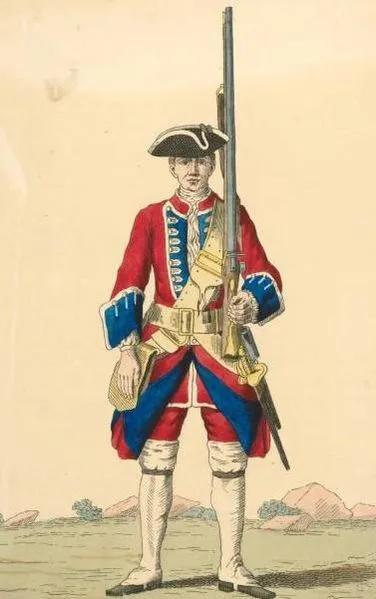Dumbarton Drums
Scottish Country Dance Instruction
DUMBARTON DRUMS (R8x32) 3C (4C set) Thomas Wilson RSCDS Book 51- 8 1s dance RSh reels on own sides
9-16 1s lead down the middle and back to top
17-24 1s+2s dance Allemande 1s end with Lady between 2s facing down and Man between 3s facing up
25-32 All set twice 1s turning to left to 2nd place own sides (reverse petronella turn), all set twice
(MINICRIB. Dance crib compiled by Charles Upton, Deeside Caledonian Society, and his successors)
Keith Rose's Crib Diagram
Dance Instruction Videos
Dumbarton Drums - Scottish Country Dancing Instruction VideoDance Information
Dumbarton Drums is a Scottish Country Dance published by Wilson in 1816 and interpreted in RSCDS Book 5 in 1929.(Dance information copyright, reproduced here with the kind permission of George Williams)
The title of this dance, Dumbarton's Drums, comes from the Dumbarton's Drums - Song a very old song and tune which appears from the early seventeenth century.
An early form of the tune dates to the early 17th century (in Skene's manuscript) with an earlier title of "I lov'd a handsome lady". The tune appeared in Playford's "Apollo's Banquet" as a Scotch Tune. The earliest appearance of the title Dumbarton's Drums appears to be in the 1720s and the tune was published in 1788 in "The Scots Musical Museum" (a collection of Scottish folk songs and music in six volumes, 1787 to 1803).
In his "Notes on Scottish Songs by Robert Burns" 1908 J.C. Dick quotes Burns as saying, "This is the last of the West Highland airs".
The Scots Musical Museum has an accompanying verse which Emerson's "Scotland Through Her Country Dances" identifies as appearing in the (earlier) Allan Ramsay's Tea Table Miscellany of 1723.
When they mind me of my dear Johnie, O;
How happy am I
When my soldier is by,
While he kisses and blesses his Annie, O!
'Tis a soldier alone can delight me, O,
For his graceful looks do invite me, O;
While guarded in his arms,
I'll fear no war's alarms,
Neither danger nor death shall e'er fright me, O.
There are now different versions of the song accompanying the Dumbarton Drums tune.
Rather than being named after the town Dumbarton, it is generally accepted that "Dumbarton" refers to the 1st Earl of Dumbarton and to his Regiment of Foot. (Colonel George Douglas, The Royal Regiment of Foot 1660 to 1685).
Lord George Douglas was created Earl of Dumbarton in 1675. He was appointed by King James VII of Scotland (James II of England and Ireland) to the command of the king's Scottish forces. In 1685 he suppressed a rebellion against James led by the Earl of Argyll. The Regiment became known as the Regiment De Dumbarton, "Dumbarton's Regiment".
The tune is also played as a regimental quick march for the Royal Scots Regiment. It is the British Army's oldest march-past tune. It has never been officially approved as the Royal Scots Regiment failed to obey an order in 1881 to submit the tune for the Horse Guards' approval as a march-past.
Dumbarton Drums Song - Information Video

Royal Regiment Of Foot - Soldier 1742
This page uses content under the Creative Commons Attribution-ShareAlike 4.0 International License, along with original copyrighted content and excerpts from Wikipedia and other sources.
Text from this original 1st Earl of Dumbarton article on Wikipedia.
Image from See page for author, public domain, via Wikimedia Commons.
Back to the top of this Scottish Country Dancing Instructions 'Dumbarton Drums' page
